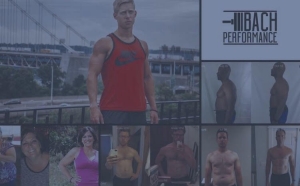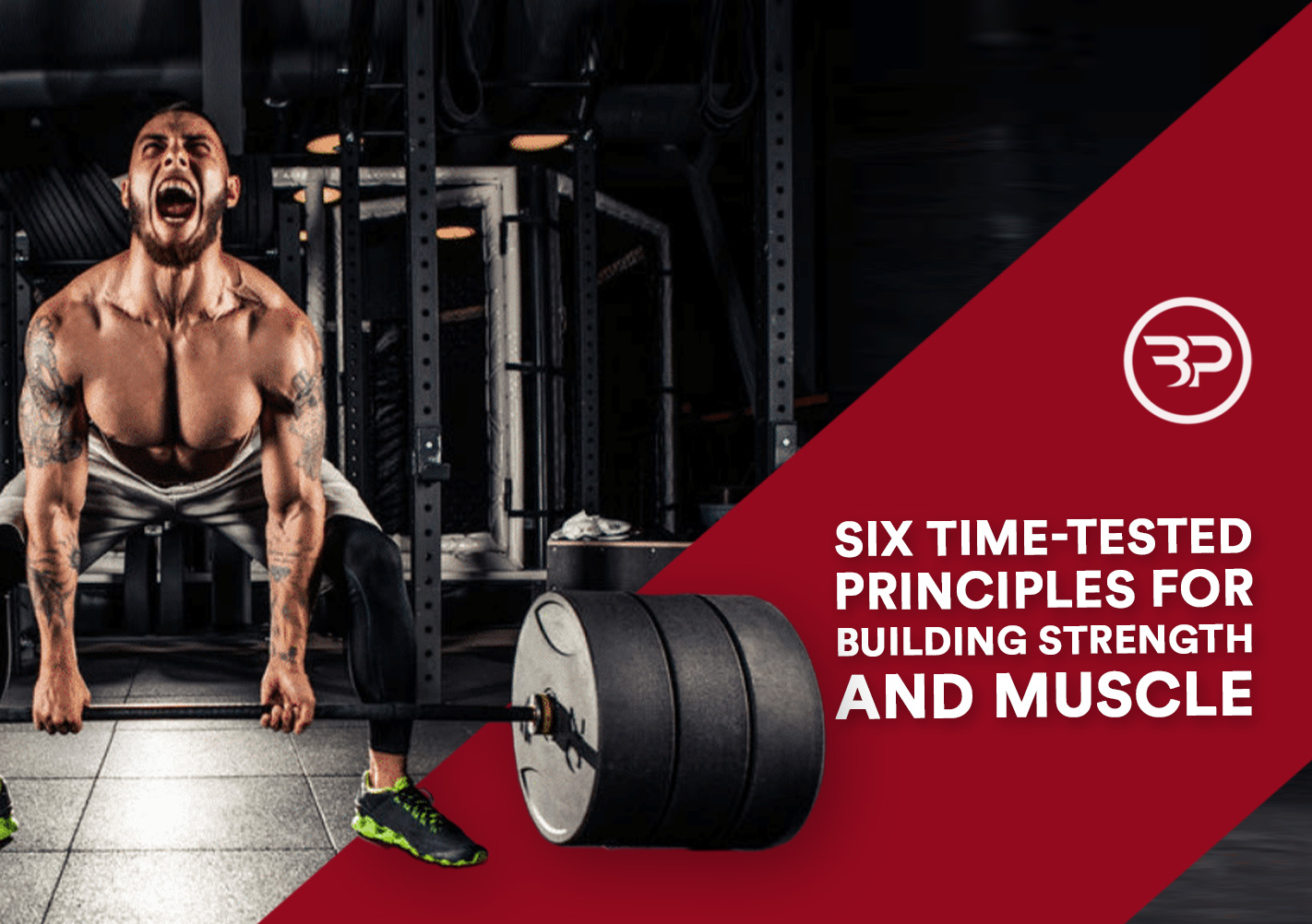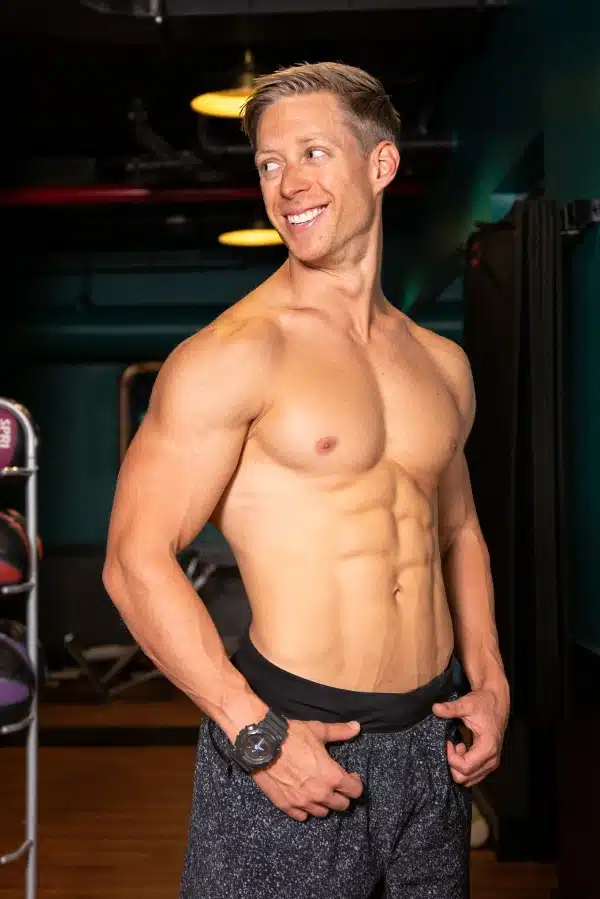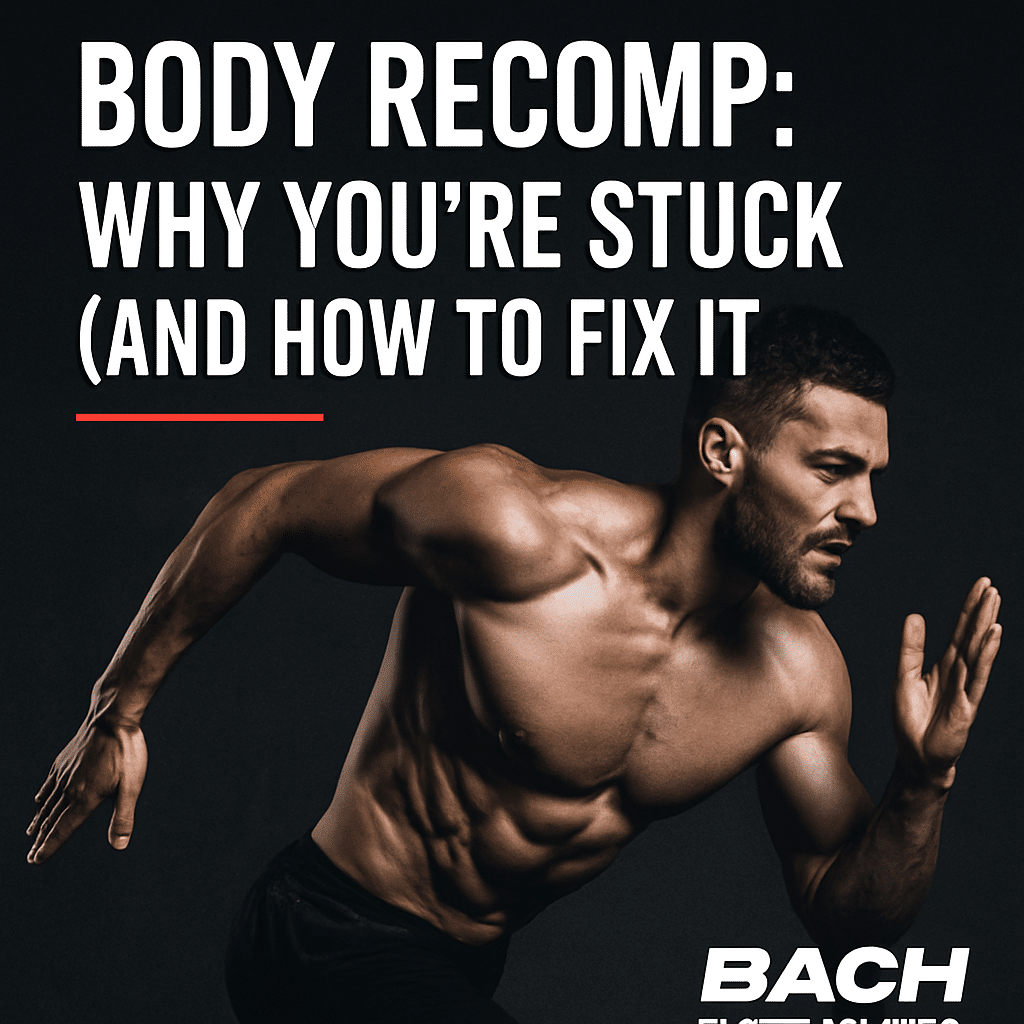Six Time-Tested Principles For Building Strength And Muscle
April 9, 2019
Building strength and muscle isn’t easy, but it’s not overly complicated either.
Still, it’s common to find yourself working hard but not getting closer to your goals.
You catch yourself scanning social media and perusing different programs as a means to change things up, overcome your plateau, and, hopefully, hop back on the gains train.
But you’ve been here before: jumping to the latest popular diet and training method, only to find yourself in the same battle six weeks later.
When you hit a plateau, the answer often lies in doing less, but better. Here are the six laws you need to simplify your training so you can look great naked without living in the gym.
Before going any further, grab a copy of your chiseled muscle cheatsheet. This step-by-step guide gives you everything you need to know to add 10-15 pounds of pure muscle.
#1 – Train Movements First, Muscles Second
I love curls as much as the next guy, but unless you’ve built up serious levels of strength, doing tons of isolation work is a poor use of your time. The three main triggers for muscle growth are:
1. Mechanical Tension
2. Metabolic Stress: the pump
3. Muscular Damage: soreness
Of these three factors, mechanical tension is the most important. The best way to create higher levels of tension is by training heavy, compound exercises. As you get stronger, you’ll be able to lift more weight for more reps, making every other training goal exponentially easier to accomplish.
Instead of focusing on isolation exercises, focus on these six movement patterns:
1. Hinge: Deadlift, good morning, kettlebell swing, snatch and clean variations
2. Lunge: Lunge, split squat, step-back lunge, Bulgarian split squat
3. Push: Bench press, push-up, overhead press, jerk, one-arm press
4. Pull: Pull-up, bent-over row, seated row, one-arm row
5. Squat: Front squat, goblet squat, Zercher squat, back squat
6. Carry: Farmer walk, single-arm carry, overhead carry
Analyze your program and ask yourself if these movement patterns are covered. If not, cut out the fluff and focus on the most time-effective training possible.
To reiterate, isolation exercises aren’t bad. They can be the perfect icing on the cake in terms of building muscle and for activating stubborn muscle groups. But you need the cake; ergo, the foundation of strength to complete your journey for size and strength.
In other words, focus on bangin’ out the decent weight in bent-over rows and chin-ups, before chasing a bigger biceps peak every Friday evening.
2. Optimize Exercise Order
To maximize your gains in performance, strength, and muscle, exercise order should be based on the demands of the nervous system. That means advanced methods like sprints, plyometrics, and heavy compound lifts should be done first, not after your cardio or conditioning work.
Exercises that require explosive action and synchronization of movement like jumps, cleans, heavy squats, and sprints are primarily driven by your central nervous system.
When fatigue sets in, your ability to generate force, control every inch of your reps is compromised, and your chance of pulling a hamstring or tweaking your back skyrocket.
This is why repping out power cleans and box jumps is an absolutely horrendous way to “get more athletic” and a first class ticket to injury.
A friend who wishes to remain anonymous has 17 stitches to prove it. He decided to do prowler pushes and box jumps at the end of a strength workout. The box jumps did not go well. #WTFwashethinking.
Here’s the ideal way to order exercises, especially if you want to boost strength and performance. It’s based on nervous system demands.
1. Dynamic Movements: Jumps, throws, and sprints if training for speed
2. Explosive/Power: Power clean, snatch
3. Compound Strength: Squat, deadlift, press, pull
4. Compound, Higher Rep, Hypertrophy: Squat, deadlift, press, pull
5. Isolation Work: Curl, calf raise, leg extension
6. Conditioning
As far as building a high-performance physique is concerned, it’s important to train the exercises most sensitive to fatigue early on.
Sure, you can try pre-fatiguing sets and isolation exercises early in your training during some muscle building phases, but it’s not ideal for performance. Start with explosive movement, sprinkle in your heavy compound weight training, move to higher-rep isolation work, and finish with conditioning.
3. Stick to Mostly Classic Strength Training Exercises
Consider me an old soul (or just plain old) but the exercises that worked best generations ago for classic bodybuilders and athletes are still the best today.
“New” doesn’t necessarily mean effective.
A good rule of thumb the majority of the time: If the training implement wasn’t around thirty years ago, then it’s not worth your time.
There are a few exceptions, but when it comes down to it, exercises and tools that have withstood the test of time should make up the majority of training. There’s a reason barbell and dumbbell exercises have been around for 100+ years– they work.
As an example, take a peek at Arnold Schwarzenegger’s Golden Six Program. This is what he recommends for most folks getting started in the gym. This was his focus BEFORE adding anabolic steroids into the mix and dominating the bodybuilding world:
- Barbell Back Squat: 4×10

- Wide Grip Barbell Bench Press: 3×10
- Chin-Up: 3 x Max Reps
- Behind the Neck Overhead Press: 4×10
- Barbell Curl: 3×10
- Bent Knee Sit-Up: 3-4 x Max Reps
Pretty basic and simple, right? Well, this is because basic and simple is often the best.
Remember, you don’t need to train like a pre-contest bodybuilder or high-level athlete to look great naked and improve your health. Chances are you don’t have the foundational skills, the drugs, nor the all-in lifestyle to maximize the demands of these workouts, anyway.
Squats, deadlifts, cleans, push-ups, and lunges, etc., should be the primary exercises used in your programs. Kick it old school. Keep it hard and simple.
4. Quality Lifting Will Triumph Over Quantity Lifting Every Time
Would you rather have a five-pound microwave pizza or an authentic pizza with the best ingredients, cooked by an Italian chef in a wood-burning stove imported from Italy?
Quality is more important than quantity, in pizza and in lifting.
Tracking weight, setting personal records, and adding weight to the bar is essential to building strength and muscle.
But never forget the basics, like the quality of each rep.
Your goals dictate the number of reps, the speed, and the weight on the bar. But your focus should never change. Hone in on the best technical mastery of each rep, rather than each set.
Try to mentally break your sets of 5 reps into 5 sets of 1 rep. It’s much easier to focus on rep execution when you only need to worry about 1 rep. In other words, focus on each individual rep, independent of the set. By focusing on the rep execution you become more in tune with technique, recruit more muscle, reduce injuries, and get more plates on the bar.
5. Training Consistency Is The Most Important Factor For Success
A few months back, I asked the Minimalist Muscle Facebook Community how often they trained. The majority said 4-6x per week.
This is great, except for the elephant in the room: Are they really training that often and that consistently each and every week, without fail?
Choosing a five-day-per-week body part split might be perfect, but missing a day or two every week throws the entire program out of whack.
You might end up with nine or ten days between leg workouts, for example. Not optimal. When this happens, the results are huge performance gaps that cause strength and muscular plateaus down the road, imbalances that lead to injury, and shoddy training overall.
Remember, your workout plan must match your ability to consistently complete full training cycles. Training is not a mish-mash of exercises thrown together in fuck-it-all fashion; it’s a process of triggering the right physiological change at the right time to trigger a correct response.
That’s why total body training splits are a good idea for many people. Even if you miss a day, you’re still hitting major muscle groups and movements two or three days per week.
6. Be Present. Stop Just Going Through the Motions
At work, I’ve noticed four to six hours of focused, distraction-free work is exponentially more productive than 12 hours of “grinding, which is inevitably broken up by scanning social media and getting lost in my inbox.
In the case of work, less but better is, well, better.
The same principle applies to the gym.
Those who train like caged animals (even when form sucks), aren’t scanning their phone between (or during) sets generally have impressive physiques and move serious weight.
This is focused intensity and determination at work, my friend.
You can’t approach the rack while swiping for babes on Bumble, or posting on Instagram if you want to maximize your training.
Remove distractions.
Focus.
Close your eyes, imagine yourself crushing the weight, and then do it.
Don’t worry about tempo, number of sets, and what Tabata hip-thrusting routine is best for you. Just focus on each rep, each set, and each workout with distraction-free intensity. Combine your knowledge and technique with intense focus and you’ll maximize your training.
Trust me on this: Your ability to focus on a superpower both in the gym and out in the world. By limiting distractions and focusing on the task at hand you’ll do more quality work in less time and ultimately, succeed.
And should you need help along the way?
I’ve developed two free guides to help you out. Click on the links below to download, simplify fitness, and ultimately, look better naked without living in the gym.
Lose Fat: The No BS Guide to Intermittent Fasting
Build Lean Muscle: Chiseled Muscle Cheat Sheet
Note: A variation of this article was originally published on T-Nation in 2015.









Hey, very nice blog. I came across this on Google, and I am stoked that I did. I will definitely be coming back here more often. Wish I could add to the conversation and bring a bit more to the table, but am just taking in as much info as I can at the moment. Thanks for sharing.
how exercise affects the body